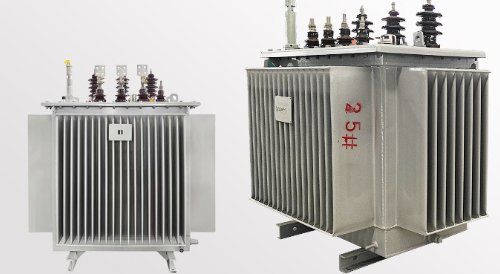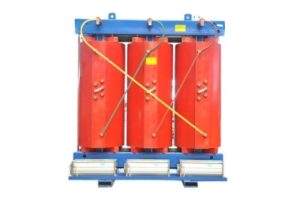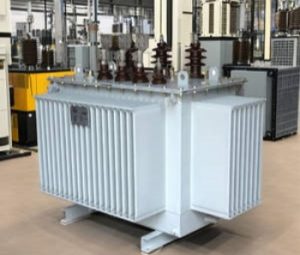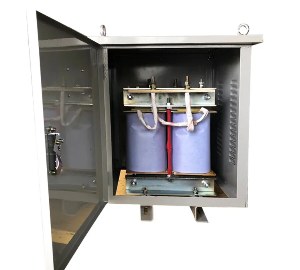Electronic Components Supplier | Transformers, Inductors, Inverters
30 kVA Transformer: A Comprehensive Technical Guide
1. Introduction to 30 kVA Transformers
A 30 kVA (kilovolt-ampere) transformer is a medium-capacity power transformer widely used in commercial and industrial applications. With its optimal balance of size and power handling capability, this transformer rating is particularly suitable for:
-
Small to medium-sized factories
-
Commercial buildings
-
Renewable energy systems
-
Hospital and institutional power backup

2. Key Technical Specifications
2.1 Electrical Parameters
| Parameter | Typical Value |
|---|---|
| Primary Voltage | 480V/11kV/22kV |
| Secondary Voltage | 120/208V/240V/480V |
| Frequency | 50Hz/60Hz |
| Efficiency | 96-98% |
| Impedance | 4-6% |
2.2 Physical Characteristics
-
Weight: 150-300 kg (dry-type), 250-400 kg (oil-filled)
-
Dimensions: Approx. 600×500×700 mm (W×D×H)
-
Cooling: ONAN (oil) or AN (air) cooling
3. Common Types of 30 kVA Transformers
3.1 Dry-Type Transformers
-
Advantages:
-
Lower maintenance requirements
-
Fire-resistant (ideal for indoor installations)
-
Environmentally friendly (no oil leakage risk)
-
Applications:
-
Shopping malls
-
Office buildings
-
Data centers
3.2 Oil-Immersed Transformers
-
Advantages:
-
Better heat dissipation
-
Longer lifespan
-
More economical for outdoor use
-
Applications:
-
Industrial plants
-
Utility substations
-
Renewable energy farms
4. Installation Considerations
4.1 Site Requirements
-
Clearance: Minimum 1m around all sides
-
Foundation: Vibration-isolated concrete pad
-
Ventilation: Adequate airflow for cooling
-
Protection: Weatherproof enclosure for outdoor units
4.2 Electrical Connections
-
Primary side protection: HRC fuses or circuit breaker
-
Secondary side: Proper grounding (≤5Ω)
-
Cable sizing: Refer to IEC 60364-5-52 standards
5. Performance Characteristics
5.1 Load Capacity
-
Continuous rating: 30 kVA at 40°C ambient
-
Overload capacity:
-
110% for 2 hours
-
125% for 1 hour
-
150% for 30 minutes
5.2 Losses Analysis
-
No-load losses: 150-300W
-
Load losses: 600-900W at full load
-
Total losses: Typically 1.5-2% of rated capacity
6. Maintenance Requirements
6.1 Dry-Type Transformers
-
Annual inspection checklist:
-
Visual inspection for dust accumulation
-
Tightness of connections
-
Insulation resistance measurement
-
Cooling fan operation check
6.2 Oil-Immersed Transformers
-
Maintenance schedule:
-
Quarterly: Oil level inspection
-
Biannual: Oil quality testing (BDV, acidity)
-
Annual: Winding resistance measurement
-
5-year: Complete oil replacement
7. Cost Analysis
7.1 Initial Investment
-
Dry-type: $2,500-$4,000
-
Oil-filled: $1,800-$3,200
-
Additional costs:
-
Installation: $500-$1,000
-
Protective devices: $300-$800
7.2 Lifecycle Costs
-
Expected lifespan:
-
Dry-type: 20-25 years
-
Oil-filled: 25-30 years
-
Energy losses cost: $150-$300/year (based on $0.12/kWh)
8. Specialized 30 kVA Variants
8.1 Solar Isolation Transformers
-
Features:
-
Reinforced insulation
-
DC component rejection
-
150% overload capability
8.2 Medical Isolation Transformers
-
Key specifications:
-
Low leakage current (<0.5mA)
-
Special shielding
-
IT power system compatibility
9. Industry Standards Compliance
-
IEC 60076 (Power transformers)
-
IEEE C57.12.00 (General requirements)
-
UL 506 (Specialty transformers)
-
EN 61558 (Safety requirements)
10. Future Trends
-
Smart monitoring integration:
-
Temperature sensors
-
Load monitoring
-
Predictive maintenance alerts
-
Improved materials:
-
Amorphous metal cores
-
High-temperature insulation
-
Compact designs:
-
20% size reduction targets
-
Modular configurations
Conclusion
The 30 kVA transformer represents an optimal solution for diverse power distribution needs, offering an excellent balance between capacity, physical size, and cost-effectiveness. When selecting a 30 kVA unit, engineers must carefully consider the application environment, load characteristics, and maintenance requirements to ensure optimal performance throughout the transformer's service life. With advancing technologies, modern 30 kVA transformers are becoming more efficient, intelligent, and adaptable to emerging power system requirements.






